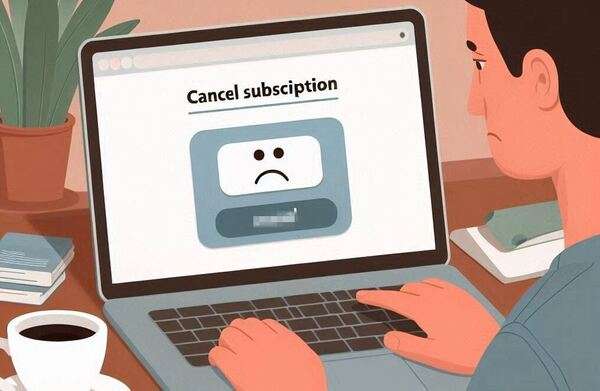The business world stands at a peculiar crossroads where artificial intelligence meets climate reality, where remote work reshapes cities, and where younger employees demand companies answer questions their predecessors never thought to ask.
Nostradamus peered into murky futures through cryptic quatrains, and today's business leaders face equally obscure signals about what comes next - except now the prophecies arrive as data points, market shifts, and cultural tremors rather than poetic verses.
The crystal ball for business looks cloudier than usual, not because the future lacks direction, but because multiple futures compete simultaneously for dominance. Fortune favors those who spot the patterns before they become trends, who read the warning signs while others dismiss them as noise.

The Death of Corporate Neutrality
Companies will soon face an impossible task: staying neutral on anything that matters to anyone. Your brand will need to pick sides on climate action, political movements, social justice, and economic inequality because silence will be interpreted as complicity. The expectation that businesses exist purely to generate profit has already started crumbling, and this erosion will carve canyons through traditional corporate strategy. Consumers increasingly vote with their wallets based on values alignment, and this voting bloc grows more organized and militant each year.
The shareholders themselves will demand these positions, creating a feedback loop where companies must broadcast their values to attract both customers and investors. Boardrooms will spend more time debating ethical stances than quarterly earnings, not from altruism but from survival instinct. Private equity firms will develop "values portfolios" to attract younger investors who refuse to separate money from morality. The companies that thrive will be those that commit authentically to positions, while those that performatively gesture toward values will face swift, brutal backlash from an increasingly savvy public.
Organizations that attempt to please everyone will find themselves pleasing no one, caught in crossfire from all directions. The safe middle ground that corporations traditionally occupied will become the most dangerous territory in business. Your company's stance on controversial issues will define your customer base more than your products or services do. Brands will essentially become political parties with products attached, and consumers will align themselves accordingly.
What This Means for Your Strategy
- You'll need to decide which customers you're willing to lose before competitors force that decision on you
- Marketing departments will merge with legal and public relations teams to manage constant controversy
- Your hiring process will screen for values alignment as rigorously as for skills and experience
- Annual reports will dedicate more pages to social positions than to financial performance

The Hybrid Work Apocalypse Gets Weird
Remote work won't die, but it won't look anything like what you currently practice. Companies will split into two camps: those that demand full return to office and those that eliminate physical offices entirely, with almost nothing in between. The middle ground of "hybrid flexibility" will collapse under its own contradictions, satisfying neither camp and creating toxic cultures where remote workers become second-class citizens. Office real estate in major cities will undergo radical transformation as companies either double down or completely withdraw.
The surprising twist arrives when fully remote companies discover they need physical spaces, just not offices. Co-working spaces will evolve into "corporate campuses" where employees from dozens of companies work alongside each other, creating accidental networking opportunities and cross-pollination of ideas that office-bound workers never experience. These spaces will operate more like university campuses than traditional offices, with employees choosing when and why to show up rather than following fixed schedules. Competition for talent will force companies to offer location stipends, allowing employees to live anywhere while maintaining occasional access to collaborative spaces.
Your decision about office policy will determine which talent pool you access. Full-remote companies will recruit globally while office-centric companies will compete for increasingly expensive local talent. The productivity debates will finally settle, revealing that neither model is inherently superior - both work brilliantly for different types of organizations with different cultures. The fatal mistake will be trying to maintain both models simultaneously, creating resentment and inefficiency that destroys the benefits of each.
How Work Locations Will Transform
- Cities will bifurcate into "corporate headquarters cities" and "digital nomad hubs" with entirely different economies
- Your real estate footprint will shrink by 60-70% even if you maintain some physical presence
- Employee compensation will decouple from location, with remote workers in cheap cities earning the same as those in expensive ones
- Office spaces that survive will be redesigned for collaboration and socialization, not for individual desk work

AI Won't Replace You, But Your AI-Using Colleague Will
Artificial intelligence won't steal jobs en masse, but workers who master AI tools will make colleagues without those skills obsolete. The productivity gap between AI-augmented workers and traditional workers will grow so wide that companies will have no choice but to favor the augmented ones. Job requirements will increasingly include proficiency in AI assistance, and interviews will test how well candidates collaborate with artificial intelligence rather than just their independent capabilities. Entry-level positions will vanish as AI handles routine tasks, but companies will create new "AI supervision" roles where humans review algorithmic outputs for errors, bias, and strategic misalignment.
The real transformation happens when companies realize they need fewer middle managers because AI handles coordination, scheduling, and basic decision-making. Management becomes less about information flow and more about human judgment on ethical questions, strategic pivots, and situations where algorithmic thinking fails. The workforce splits into two tiers: those who command AI and those who compete with it. Your company's competitive advantage will increasingly depend on how well your humans and machines collaborate rather than on the capabilities of either alone.
Every industry will develop its own AI literacy standards, and professionals without those skills will find themselves unemployable regardless of experience. The most valuable workers will be those who know when to trust AI recommendations and when to override them. Training budgets will shift dramatically from teaching people to do tasks to teaching people to supervise AI doing those tasks. Resistance to AI adoption will become a career-limiting move rather than a personal preference.
The New Skills Hierarchy
- Prompt engineering will become as fundamental as email literacy is today
- Your HR department will need to create "AI fluency" requirements for every role
- Performance reviews will measure how effectively employees leverage AI tools, not just their unassisted output
- Companies will develop internal AI certification programs because external credentials won't keep pace with technology changes

The Fracturing of Attention Economies
Social media platforms will fragment beyond recognition, with no single platform commanding the cultural dominance that earlier platforms once enjoyed. Users will maintain presence across seven to ten platforms simultaneously, each serving different purposes and connecting different social circles. Marketing departments will struggle to maintain coherent brand voices across this fragmented landscape, and influencer marketing will become prohibitively complex as audiences scatter. The advertising model that built the internet will start to crack as users increasingly pay for ad-free experiences and algorithmic manipulation becomes intolerable.
The surprise development comes from old media making a comeback, not in its original form but as "premium attention spaces" where people pay to avoid algorithmic feeds. Newsletters, podcasts, and subscription-based content will grow because they offer predictability and depth that social media platforms cannot match. Brands will invest more in owned media properties than in renting attention from platforms whose algorithms change without warning. Your marketing budget will shift from buying ads to creating content that people actually choose to consume.
Platforms will rise and fall within 18-month cycles, with users abandoning each new "authentic connection" promise as quickly as they embraced it. Companies that build entire marketing strategies around trending platforms will find themselves shouting into abandoned digital ghost towns. The most valuable marketing asset will be direct relationships with customers through channels you control - email lists, proprietary apps, membership programs - rather than borrowed audiences on platforms that could disappear overnight.
Adapting to Attention Chaos
- Your marketing team will need specialists for 8-10 different platforms instead of the current 3-4
- Direct-to-consumer channels will become mandatory rather than optional for survival
- Customer data collection will shift from tracking behavior to earning permission for direct communication
- Content creation costs will triple as you produce platform-specific versions of every message
Supply Chains Become Political Weapons
Global supply chains will weaponize completely, with nations and blocs using access to resources, manufacturing, and logistics as leverage in geopolitical conflicts. Nostradamus might have written about kings and kingdoms warring over spice routes, but the modern version involves semiconductors, rare earth minerals, and pharmaceutical ingredients becoming tools of statecraft. The "just in time" efficiency model will die completely, replaced by "just in case" redundancy that costs more but prevents catastrophic disruptions. Nearshoring will evolve into "friendshoring," where companies build supply chains exclusively within allied nations regardless of cost efficiency.
Asian manufacturing will split between competing geopolitical supply chains, with companies forced to choose which system they participate in. The era of globally optimized supply chains based purely on efficiency metrics will seem quaint, replaced by politically optimized supply chains that prioritize reliability over cost savings. Your procurement strategy will require geopolitical analysts on staff, not just logistics experts. Trade routes will be selected based on political stability and alliance structures rather than pure transportation costs.
Mexico will emerge as the manufacturing powerhouse for North American markets, while companies serving European markets will concentrate manufacturing in Eastern Europe and North Africa. Every sourcing decision will carry political implications that could alienate customers, anger governments, or trigger retaliatory actions. Your supply chain will need multiple backup options for every critical component, destroying the cost efficiencies that globalization promised. Inventory levels will increase dramatically as companies stockpile against potential disruptions.
Dealing With Geopolitical Supply Chains
- Manufacturing costs will increase 25-40% as you sacrifice efficiency for security
- Your supply chain team will need political risk analysts and regional experts
- Dual supply chains serving different markets will become standard for any global operation
- Supplier relationships will be evaluated on political alignment as much as on price and quality
The Subscription Fatigue Rebellion

Consumers will revolt against subscription models, having reached the breaking point where their monthly commitments exceed their willingness to pay. The average household currently maintains streaming subscriptions, software subscriptions, meal kit subscriptions, plus phone, internet, and various digital services. This subscription creep has created a generation of consumers who spend more on recurring payments than on discretionary purchases, and the backlash will be swift. Companies that survive will be those offering genuine value rather than those exploiting laziness about cancellation.
The "dark pattern" tactics that make cancellation deliberately difficult will trigger regulatory crackdowns and class-action lawsuits. Consumers will demand pay-per-use options that charge only for actual consumption rather than recurring fees for services they might use someday. The psychology shifts from "I need access to everything" to "I'll pay for what I actually use," destroying business models built on subscribers who forget to cancel. Your subscription service will need to justify its existence monthly rather than relying on inertia to maintain revenue.
Professionals will face constant churn as subscribers rotate services monthly, consuming specific content then canceling rather than maintaining perpetual subscriptions. Software companies will face pressure to offer perpetual licenses again or watch customers flee to competitors who do. The subscription gold rush will end as consumers realize they're spending thousands annually on services they barely use. Your retention strategy will need to focus on demonstrable value rather than cancellation friction.
Surviving the Subscription Collapse
- You'll need to offer flexible pricing including pay-per-use and annual discounts to prevent monthly churn
- Cancellation processes must become one-click simple or face regulatory penalties
- Your product must deliver obvious monthly value rather than relying on customer forgetfulness
- Reactivation campaigns will become more sophisticated as customers rotate subscriptions seasonally
Climate Costs Become Unavoidable
Insurance markets will force businesses to confront climate change, not through environmental consciousness but through mathematical necessity. Had Nostradamus gazed into our era, he might have penned verses about great floods swallowing coastal cities and scorching heat rendering once-fertile lands barren - prophetic imagery that reads less like mysticism and more like actuarial tables with each passing season. Supply chains will face frequent disruptions from extreme weather events that insurance no longer covers. Your business continuity planning will need to account for climate disruptions as baseline assumptions rather than edge cases.
Agricultural businesses will face crop failures and livestock losses that exceed historical models, while tourism businesses in formerly desirable locations will see demand collapse as temperatures make regions uninhabitable. Construction costs will soar as building codes adapt to extreme weather requirements. Energy costs will become wildly volatile as renewable sources prove unreliable during extreme weather while fossil fuel infrastructure suffers climate-related damage. Every industry will discover hidden climate vulnerabilities in their operations.
Regulations will force carbon accounting into financial statements, making climate impact as visible as profit margins. Customers will demand transparency about environmental costs, and "greenwashing" will trigger lawsuits and boycotts. Your operations will need climate resilience planning that previous generations never considered. Water access will become a competitive advantage in manufacturing and agriculture, with some regions simply becoming non-viable for certain industries.
Climate Adaptation Requirements
- Your insurance premiums will increase 200-400% for any physical assets in vulnerable locations
- Supply chain planning must account for regular disruptions from extreme weather events
- Physical locations will need major infrastructure upgrades to withstand temperature extremes
- Carbon accounting will become mandatory in financial reporting, affecting valuations and investment decisions
The Generational Workplace Collision

Younger workers will soon comprise a third of the workforce, and their expectations will shatter traditional employment structures. These workers will refuse to separate personal values from professional lives, demanding that employers take positions on social issues and demonstrate authentic commitment. Job tenure will average 18 months as younger workers treat employment as a series of learning opportunities rather than careers. Your retention strategies built on loyalty and advancement will fail spectacularly with this demographic.
Mental health accommodations will transition from generous perks to non-negotiable requirements, with workers expecting therapy coverage, mental health days, and workload adjustments as standard. The stigma around discussing mental health struggles will vanish entirely, replaced by expectations that managers actively monitor and support employee wellbeing. Younger workers will reject hustle culture completely, viewing overwork as foolish rather than admirable. Your company culture will need to adapt or face talent shortages that cripple operations.
Hierarchical management structures will collapse as younger workers demand flat organizations with transparent decision-making. The concept of "paying your dues" will seem absurd to workers who expect immediate meaningful contributions and rapid advancement. Remote work will be non-negotiable for this demographic, with office requirements causing instant disqualification from consideration. Your recruiting pipeline will need complete reconstruction to attract workers who view employment fundamentally differently than previous generations.
Meeting Generational Expectations
- Management training will focus on coaching and mental health awareness rather than traditional supervision
- Your organizational structure will need to flatten dramatically to retain young talent
- Transparency in pay scales, decision-making, and company strategy becomes mandatory
- Career development programs must offer advancement opportunities within months rather than years
The Privacy Pendulum Swings Back
Data collection practices that seemed acceptable recently will trigger massive backlash as consumers realize the extent of surveillance capitalism. Regulations will multiply globally, creating compliance nightmares for any company operating across borders. The "accept all cookies" buttons that users click mindlessly will face legal tests as courts recognize that complexity equals coercion. Your data practices will need complete overhauls to survive the coming regulatory tsunami and consumer revolt.
Technology giants will face breakup attempts as governments recognize that data monopolies threaten democracy itself. Smaller competitors will emerge offering "privacy-first" alternatives to every major platform, and users will migrate despite inferior features. The advertising model that funds free internet services will crack as tracking becomes illegal or technically impossible. Your business model will need restructuring if it depends on collecting and monetizing user data.
Consumers will demand payment for their data rather than accepting "free" services that monetize their information. Companies that transparently pay users for data access will build competitive advantages over those that take data without compensation. Anonymization requirements will become so stringent that many current analytics practices become illegal. The pendulum will swing from "data is the new oil" to "data is the new toxic waste" - valuable but regulated to prevent harm.
Adapting to Privacy Regulations
- Your legal team will need privacy specialists for every jurisdiction where you operate
- Data minimization will become legally required rather than best practice
- User consent mechanisms must be genuinely informed and freely given or face penalties
- Alternative business models that don't rely on data harvesting will become competitive necessities
The Gig Economy Reckoning
Contract workers and gig economy participants will successfully push for employee protections, destroying business models built on labor cost arbitrage. Courts and legislatures will close loopholes that allowed companies to avoid supplying benefits while maintaining control over workers. Your labor costs will increase dramatically if your business depends on classifying workers as contractors. The distinction between employee and contractor will be redefined based on economic reality rather than contractual language.
Platform companies that intermediated between workers and customers will face regulation as public utilities rather than technology companies. Commission rates will be capped, forcing platforms to develop sustainable business models rather than extracting maximum value from desperate workers. Workers will organize digitally, creating unions that operate across companies and platforms rather than traditional workplace-based unions. Your relationship with contract workers will need restructuring to survive legal and market pressures.
The promise of "flexibility" that justified contractor status will be exposed as precarity that benefits companies at worker expense. Benefits portability will emerge, allowing workers to maintain health insurance and retirement accounts across multiple gigs and employers. Minimum earnings guarantees will become legally required for app-based work, ending the practice of having workers available without compensation. The cost advantages that made gig economy businesses viable will evaporate, forcing consolidation and business model pivots.
Preparing for Labor Market Changes
- Budget increases of 30-50% for labor costs if you currently rely on contractor classifications
- Your worker classification system will need legal review and probable restructuring
- Benefits administration will become more complex as you supply portable benefits to non-traditional workers
- Automated workforce management will face restrictions as algorithms are regulated like managers
Conclusion: Fortune Favors the Paranoid
The business world ahead will reward those who prepared for multiple contradictory futures simultaneously rather than betting everything on a single predicted outcome. Nostradamus wrote his prophecies in deliberately ambiguous language, allowing multiple interpretations to coexist - and perhaps that very ambiguity offers the best strategy for navigating what comes next, where rigid certainty becomes a liability and flexible interpretation becomes survival.
Your competitive advantage will come from building resilient systems that function under various scenarios instead of optimized systems that excel under specific conditions. The companies that thrive will be those that viewed uncertainty as opportunity rather than threat, that maintained optionality rather than committing irrevocably to any single strategy. The world isn't collapsing so much as reorganizing itself around new rules that haven't been written yet, and the businesses that survive will be those that help write those rules rather than waiting for someone else to explain them.
How I "Finally" Make Over $7,000 Monthly Income
"The most valuable thing I've ever done!"

